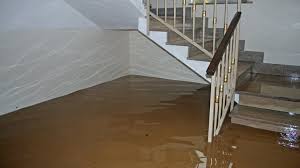
Flooding can be a devastating experience for homeowners, leaving behind damage and chaos in its wake. The aftermath of a flood can be overwhelming, but it is important to take action quickly to prevent further damage and begin the recovery process. In this blog, we will outline some of the Post Flood Recovery Tips you can take to get help and save your house after a flood.
Post Flood Recovery Tips:
Contact Your Insurance Company
The first tips in the post flood recovery tips are to contact your insurance company. Your insurance policy may cover the cost of repairs and replacement of damaged items, so it is important to understand what your policy covers. If you do not have flood insurance, you may still be eligible for assistance through the National Flood Insurance Program.
Assess the Damage:
Once you have contacted your insurance company, assess the damage to your home. Take photos of the damage and make a list of any items that need to be replaced or repaired. This information will be important when you file a claim with your insurance company.
Remove Water and Debris:
The next step in the recovery process is to remove water and debris from your home. This can be done using a wet-dry vacuum, mops, and towels. Be sure to wear protective clothing and take precautions to prevent electrical shock. If the water is contaminated, you should avoid coming into contact with it and call a professional to remove it.
Dry Out Your Home:
Once the water and debris have been removed, it is important to dry out your home as quickly as possible. Use fans, dehumidifiers, and open windows to help with the drying process. If the damage is extensive, you may need to bring in a professional to help with the drying process.
Clean and Disinfect:
After the water has been removed and your home has dried out, it is important to clean and disinfect the affected areas. This will help to prevent mould and mildew from growing and will help to protect your health.
Make Repairs:
Once the cleaning and disinfecting process has been completed, it is time to make repairs. This may include repairing damaged floor carpet, walls, and ceilings, replacing electrical and plumbing systems, and repairing or replacing damaged appliances and furnishings. hire the expert team at a water damage carpet repair company to save your flooded carpets.
Seek Help from Professional Flood Restoration Services:
If the damage to your home is extensive, it is recommended that you seek help from professional flood restoration services. These companies can help you to assess the damage, remove water and debris, dry out your home, clean and disinfect the affected areas, and make repairs.
Prevention of Floods
Preventing flood damage is crucial to protect your home, personal belongings, and peace of mind. Here are some steps you can take to help prevent flood damage in your home:
- Install a Sump Pump: A sump pump is a device that pumps water out of a basement or low-lying area to prevent water damage. Installing a sump pump can help prevent flood damage in your home.
- Grade the Land Around Your Home: Proper grading of the land around your home can help direct water away from your foundation, reducing the risk of water damage.
- Install Flood Vents: Flood vents are devices that are installed in the foundation of a home to prevent water from entering. Installing flood vents can help reduce the risk of water damage in your home.
- Seal Windows and Doors: Sealing windows and doors can help prevent water from entering your home during a flood.
- Elevate Electrical Systems: Elevating electrical systems, such as outlets and switches, can help prevent damage from floodwater.
- Maintain Your Gutters and Downspouts: Clean gutters and downspouts can help prevent water from overflowing and entering your home.
- Consider Flood Insurance: Flood insurance can provide financial protection in the event of a flood. Consider purchasing flood insurance to help protect your home and personal belongings.
- Plan for Emergencies: Having a plan in place for emergencies, such as a flood, can help you respond quickly & effectively to minimize damage.
Conclusion
In conclusion, the aftermath of a flood can be overwhelming, but it is important to take action quickly to prevent further damage and begin the recovery process. Contact your insurance company, assess the damage, remove water and debris, dry out your home, clean and disinfect the affected areas, make repairs, and seek help from professional flood restoration services. By following these steps, you can help to save your home and begin the road to recovery after a flood.
Get Professional Help
It’s important to take steps to prevent and repair flood damage to your home. The team at Flood Damage Restoration Footscray is equipped to help you with both prevention and repair services. Our professionals have years of experience and expertise. We can provide customized solutions to fit your specific needs. From installing flood prevention measures, such as sump pumps and sealing windows and doors, to repairing damage caused by floods, we have the knowledge and resources to get the job done right. Don’t let flood damage bring havoc to your home, get our professional help today.
